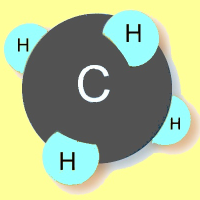Methane Gets Much More Blame for Global Warming from Two State and National Studies

Two new studies of the greenhouse gas methane, one based in California, indicate that the U.S. Environmental Protection Agency (EPA) and other scientists have vastly underestimated how much of the noxious stuff is being emitted into the atmosphere.
One study, recently published in the Journal of Geophysical Research, found that methane emissions are 1.3 to 1.8 times as high as those calculated by the California Air Resources Board. Although methane makes up just 9% of greenhouse gas emissions—way behind carbon dioxide—it is 20 times more potent. Major sources include cows, oil and gas.
Scientists at the U.S. Department of Energy's Lawrence Berkeley National Laboratory (Berkeley Lab) took measurements from a network of five towers in the Central Valley and contributed their data to a broader study of the United States that reached many of the same conclusions.
Of the California results, Berkeley Lab scientist Seongeun Jeong said, “It looks much clearer that we were underestimating emissions from livestock, but there is some possibility that some part of the southern San Joaquin Valley may have a significant contribution from oil and gas, though that has not been verified yet.”
Fellow Berkeley Lab scientist Marc Fischer reached similar conclusions about the national study, published in the National Academy of Sciences. “Even if we made emissions from livestock several times higher than inventory estimates would suggest for the southwest, you still don't get enough to cover what's actually being observed,” he said in a Berkeley Lab press release. “That's why it looks like oil and gas are likely responsible for a large part of the remainder.”
Both studies took the same “top-down” approach to measuring the pollution, which contrasts from the “bottom-up” method used by the EPA and the Emissions Database for Global Atmospheric Research (EDGAR). The older method collects data on the ground from known sources of emissions, like land fills, coal mines and livestock ranches, while the newer one measures the content of the atmosphere and compares it to a model of large-scale global airflows that accurately predict what that content should be.
Both studies used measurements made in the middle of the last decade. One of the methods scientists used to separate methane produced by cows from oil and gas was to measure the presence of propane. “Cows don't produce propane; oil and gas does,” Fischer said.
The national study also made regional assessments of methane production and found a great deal of divergence. Scientists found methane emissions in Texas and Oklahoma were 2.7 times higher than expected and attributed it to previously under-measured oil and gas pollution. The report said those emissions may actually be up to 7.5 times as high as currently believed (or merely just 2.3 times as high).
Until now, the EPA has said methane emissions have steadily declined since the mid-1990s. Those assessments are now questionable, which gives new weight to assigning methane a greater responsibility for global warming. “Our study shows that there could be large greenhouse gas emissions in places in the country where we may not necessarily have accounted for them,” a principal of the study, Harvard University’s Scot M. Miller, told the New York Times.
–Ken Broder
To Learn More:
Emissions of Methane in U.S. Exceed Estimates, Study Finds (by Michael Wines, New York Times)
Studies Find Methane Emissions in California and U.S. 1.5 Times Greater Than Expected (by Julie Chao, Berkeley Lab)
U.S. Methane Study Says Emissions 50 Percent Higher than EPA Estimates (by Seth Borenstein, Associated Press)
Solving the Case of California's Extra Methane (by Stephanie Paige Ogburn and ClimateWire, Scientific American)
A Multitower Measurement Network Estimate of California's Methane Emissions (by Seongeun Jeong, Ying-Kuang Hsu, Arlyn E. Andrews, Laura Bianco, Patrick Vaca, James M. Wilczak and Marc L. Fischer, Journal of Geophysical Research)
- Top Stories
- Controversies
- Where is the Money Going?
- California and the Nation
- Appointments and Resignations
- Unusual News
- Latest News
- California Forbids U.S. Immigration Agents from Pretending to be Police
- California Lawmakers Urged to Strip “Self-Dealing” Tax Board of Its Duties
- Big Oil’s Grip on California
- Santa Cruz Police See Homeland Security Betrayal in Use of Gang Roundup as Cover for Immigration Raid
- Oil Companies Face Deadline to Stop Polluting California Groundwater





